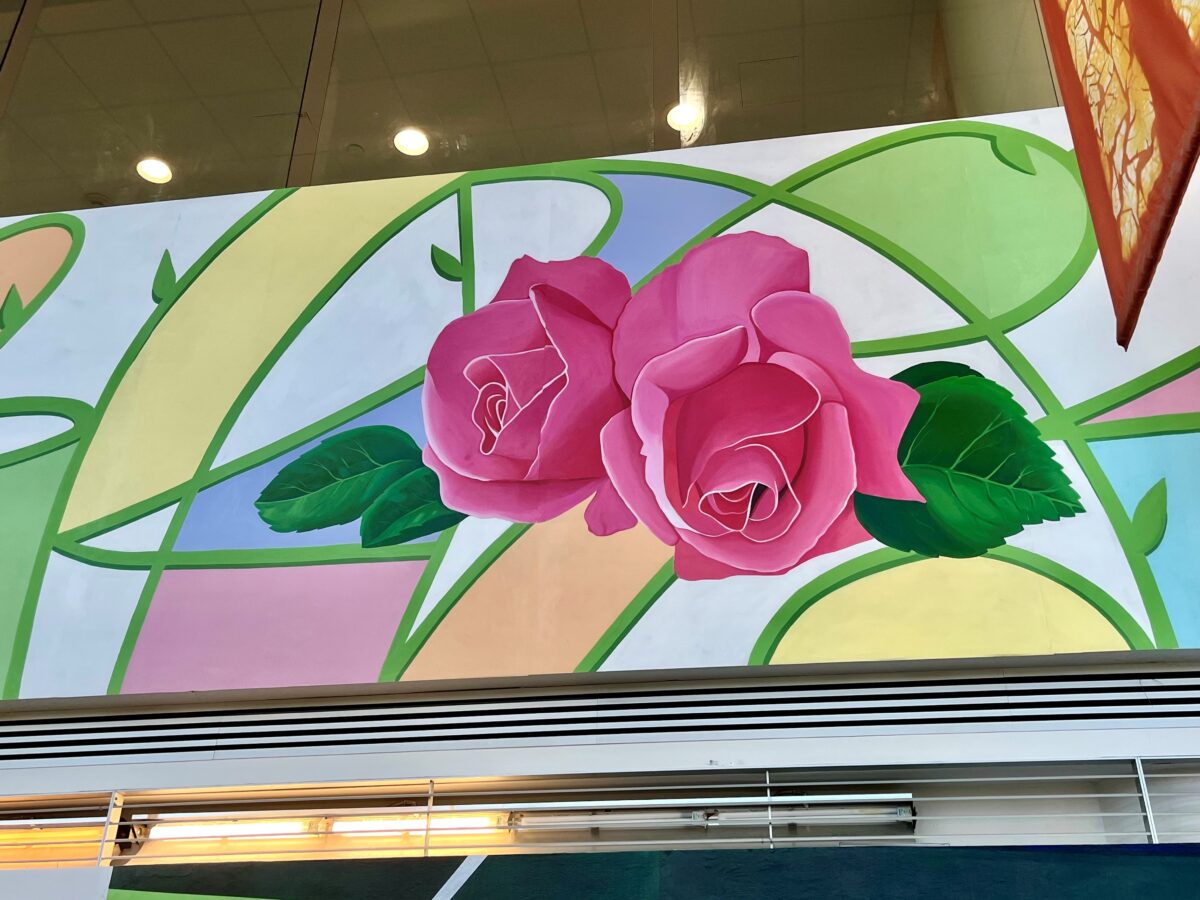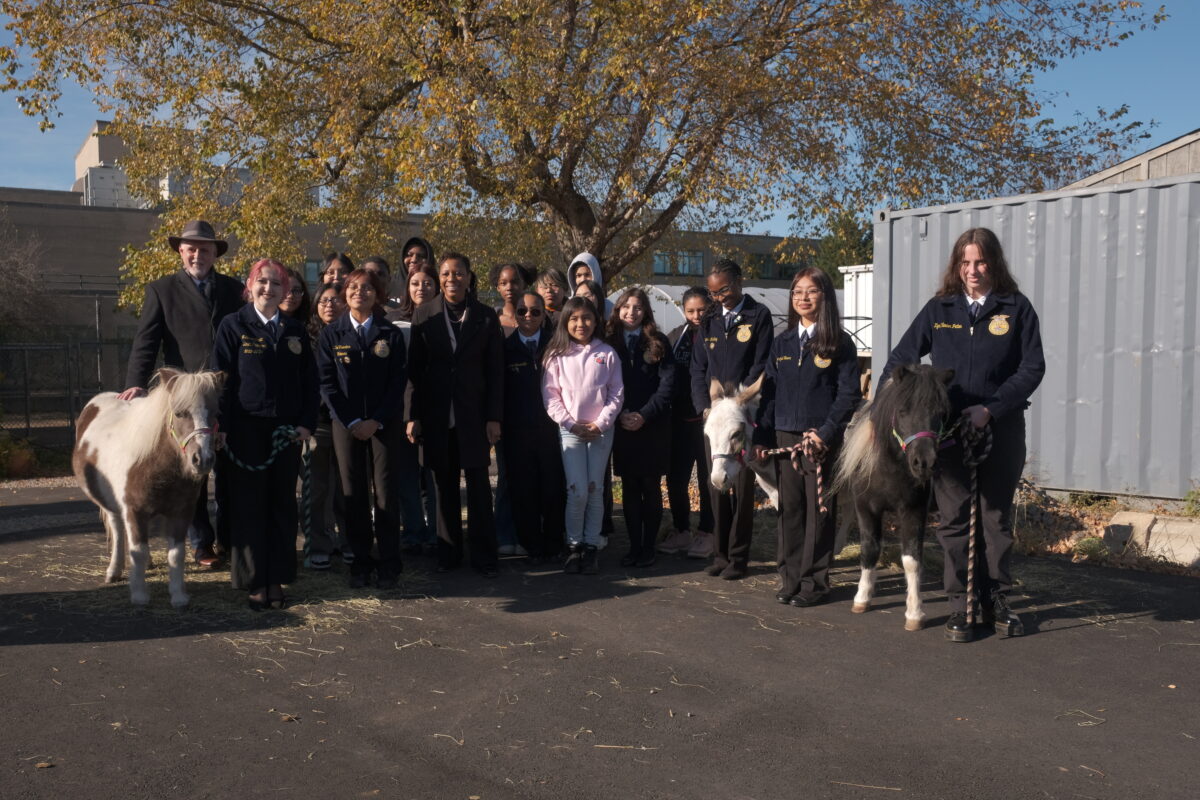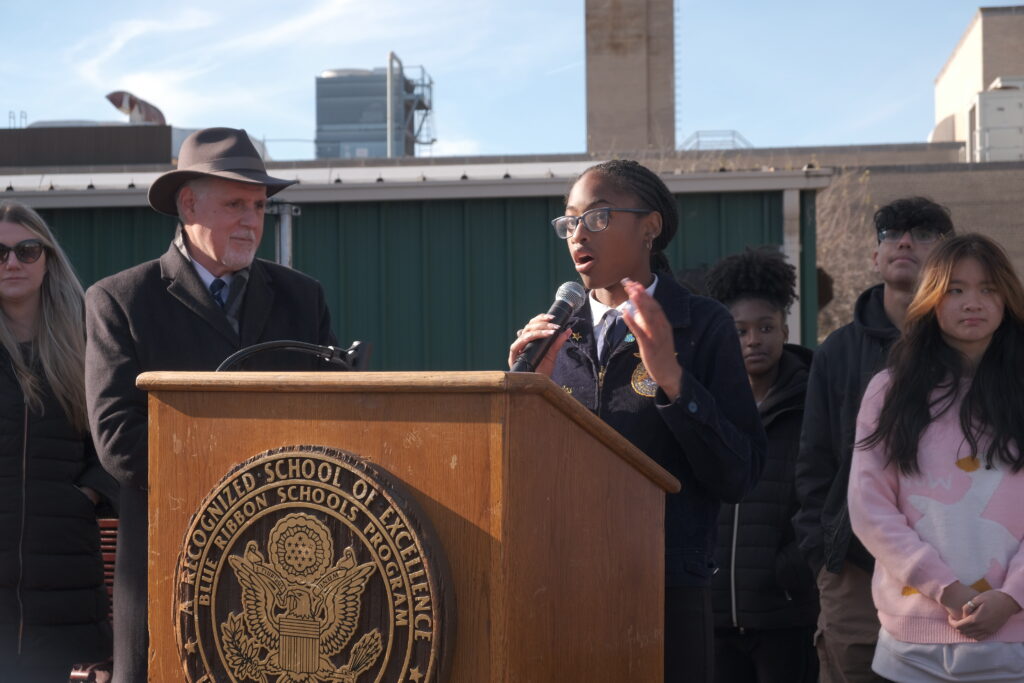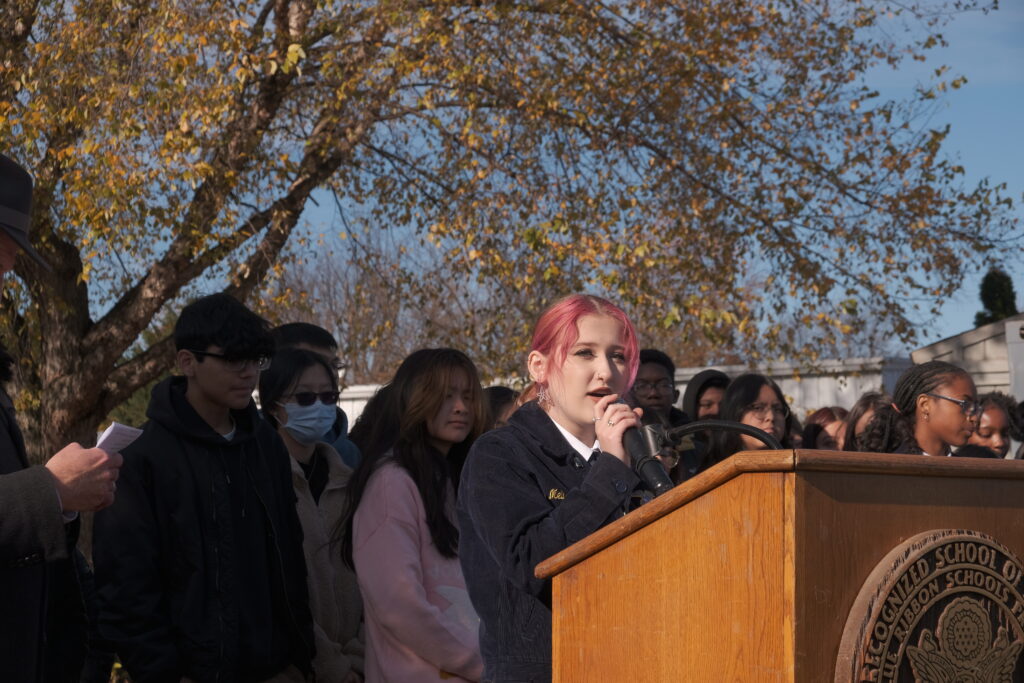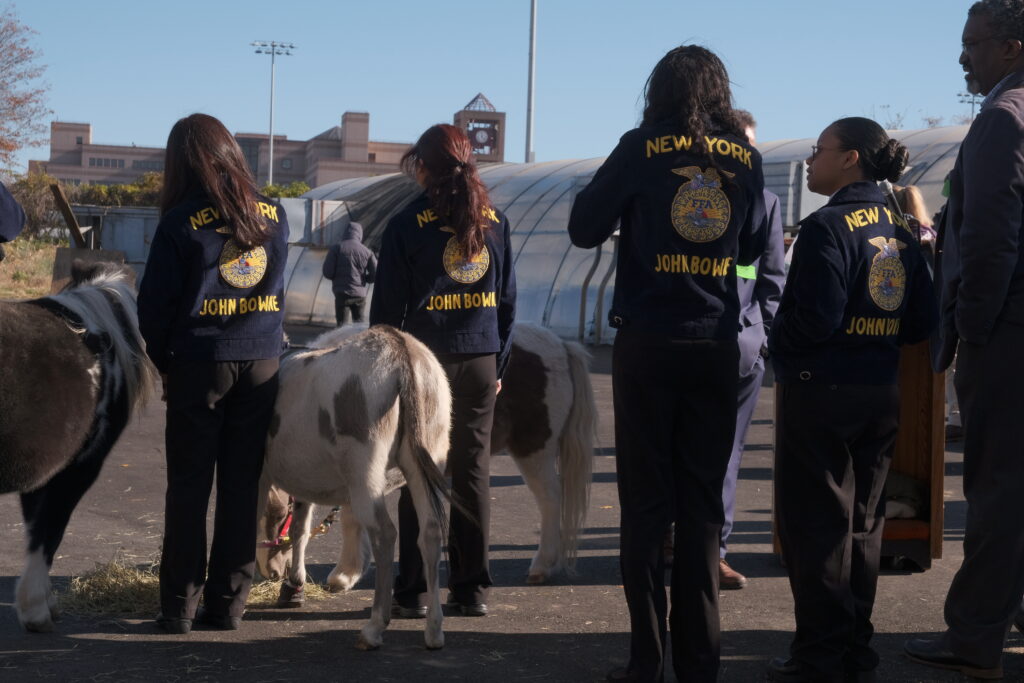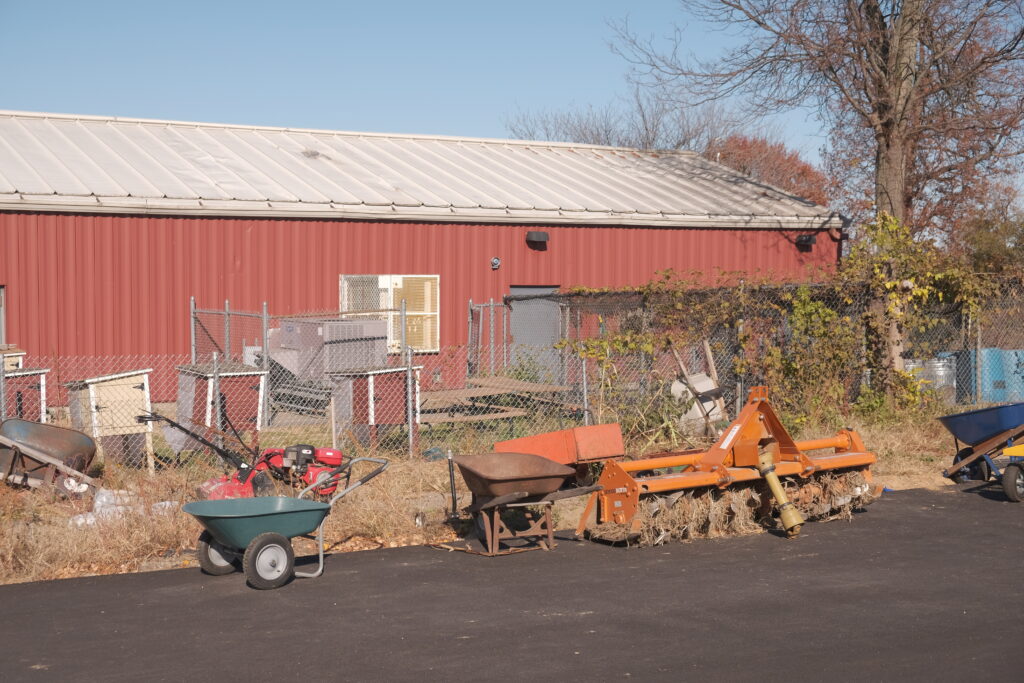Hospital Mural by Queens Artist Zeehan Wazed Unveiled
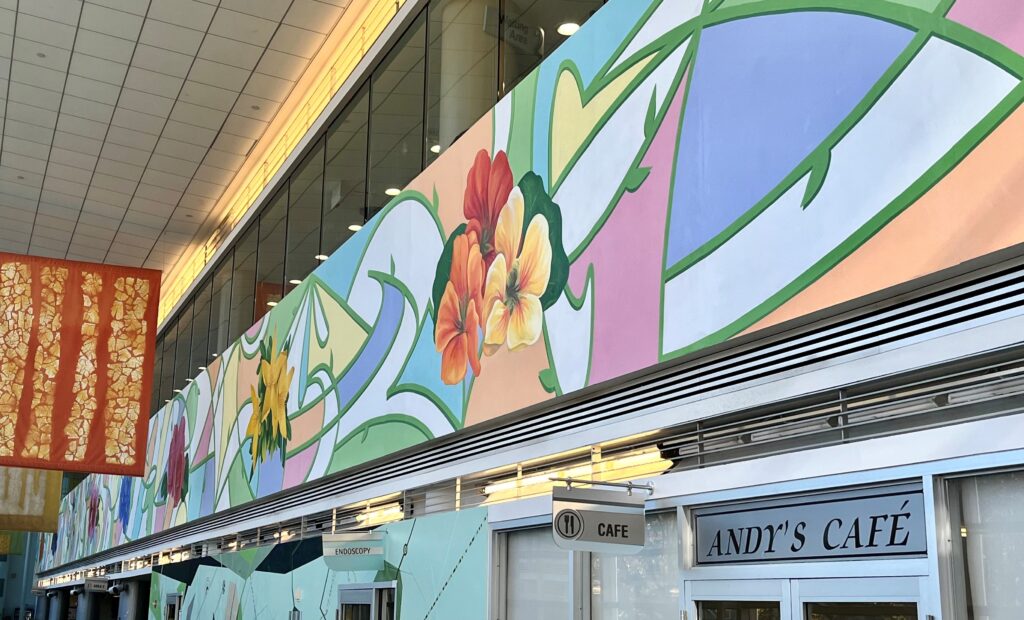
By Celia Bernhardt | cbernhardt@queensledger.com
A new mural featuring soft colors and detailed flowers stretches along the main atrium of NYC Health + Hospitals/Queens.
The mural was designed by artist Zeehan Wazed, and brought to life through a community painting party in the hospital. Wazed developed the design with the help of multiple focus groups where community members, patients, and hospital staff gave their input. Named Roots of Medicine, the painting was unveiled on Nov. 15.
The mural is one of nine painted in NYC Health + Hospitals locations just this year. It is part of the Community Mural Project, powered by the hospitals’ Arts in Medicine department. 26 murals were already created in a previous wave of the initiative. According to NYC Health + Hospitals, The Community Mural Project is the nation’s largest public hospital mural program since the Great Depression’s Works Progress Administration worked to commission murals in public buildings.
Wazed himself hails from Jamaica, Queens—he grew up just a few blocks away from the hospital that now sports his artwork. His parents still live there, though Wazed now resides in Astoria.
“I have a personal story with Queens hospital,” Wazed said. “When I was young, my dad took me [because] I broke my fingers. So using the same fingers to paint that mural—it kind of felt like it came in full circle.”
Roots of Medicine speaks to the long history of healing in different human societies, depicting eight flowers used in traditional homeopathic treatments: calendula, lavender, chamomile, echinacea, flax seeds, rose petals, St. John’s Wort, and nasturtium.
A great deal of thought went into the design. Although Wazed himself is not involved in the medical field, his sister is, and he said that his conversations both with her and with the hospital board were critical.
“Speaking to my sister, who’s pretty blunt with me—she was like, we deal with a lot of patients and sickness. To have something that reflects another aspect of recovery or medicine would be great. And also Dr. Stein, on the board of the hospitals, she wanted something that really represented not sickness, but rather life. And jubilance of life, you know? I think flowers are a great symbol of that. I think they’re very welcoming as well.”
Wazed mentioned that the flowers evoke the diversity of communities in Queens, and pointed out the green, vine-like patterned lines criss-crossing through the mural.
“There’s lines that intertwine to represent our communities, and how we’re all kind of connected.”
Wazed is appreciative of his upbringing in Jamaica’s tight-knit Bangladeshi population. “It’s an amazing community,” he said. “You can see this kind of support system that people find within their communities, at their mosque, at their library.”
“I think it’s pretty fitting that, you know, I come back to do something at Queens Hospital where there’s a lot of Bangladeshi staff as well,” he added.
Wazed has been working as an artist for about a decade. Though some of his work is in the world of canvas and galleries, he dove headfirst into public works during the pandemic.
“It’s definitely been a more humbling experience,” he reflected. “We don’t really have galleries out in Queens…but for the time being, it’s been amazing, creating public art for people who would never walk into a gallery, who just happened to walk by it and connect with it in that sense.”
Wazed’s next project is a mural in JFK. Beyond that, he plans to continue painting vibrant, public murals throughout his home borough. “I feel like I have some sort of mission here to help try to beautify Queens.”
Wazed is invested in the bigger picture of the borough’s relationship with the arts.
“I think there’s somewhat of a dearth of art in Queens,” he said, pointing out that there seem to be fewer gallery and museum spaces.
“There’s so much culture here. And I feel like it should be reflected with vibrant art.”


